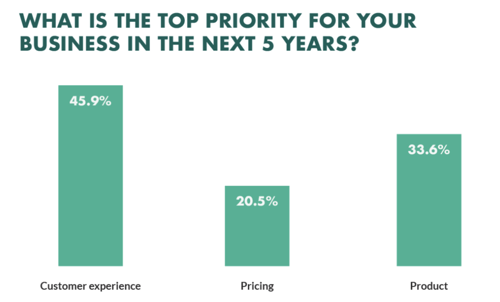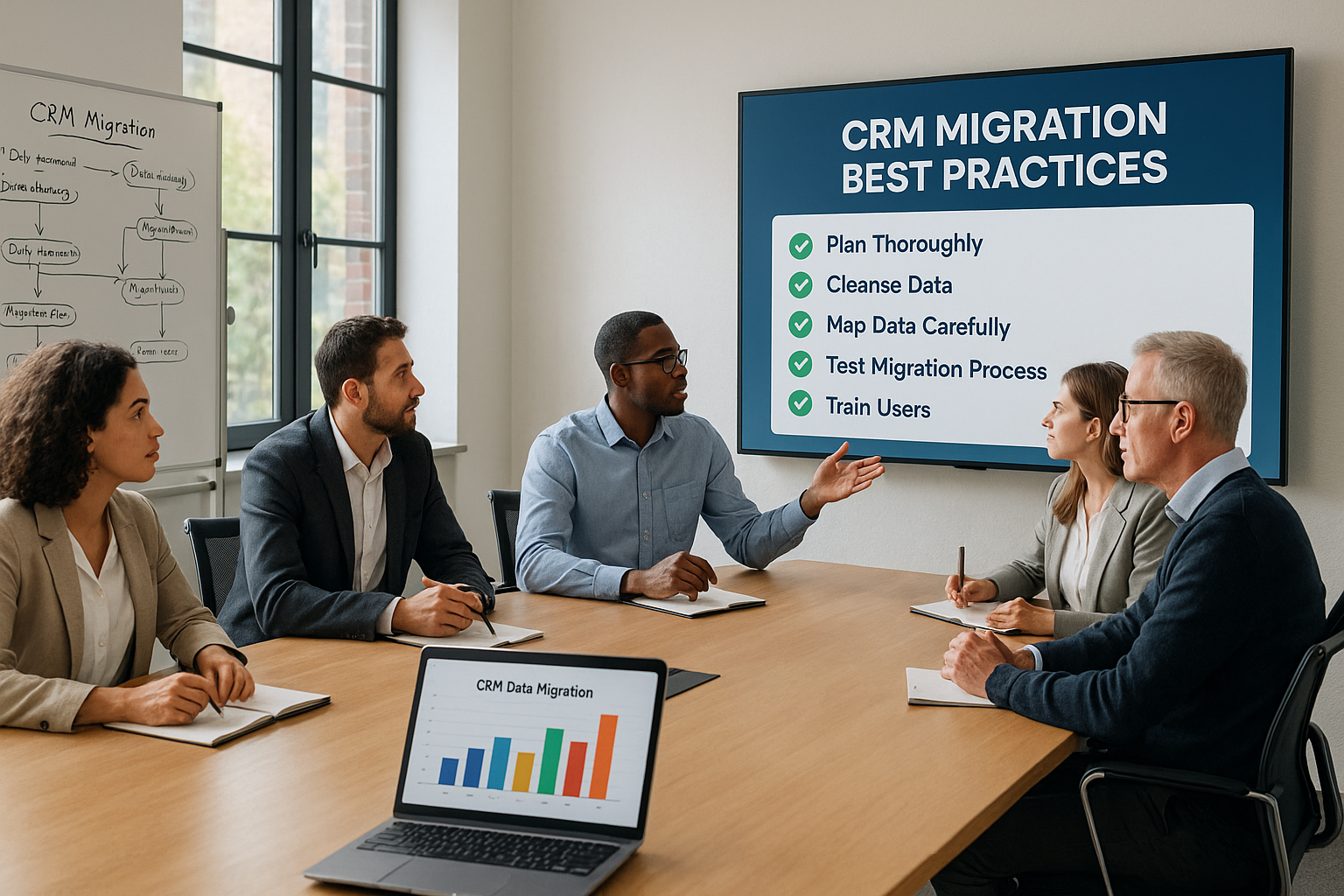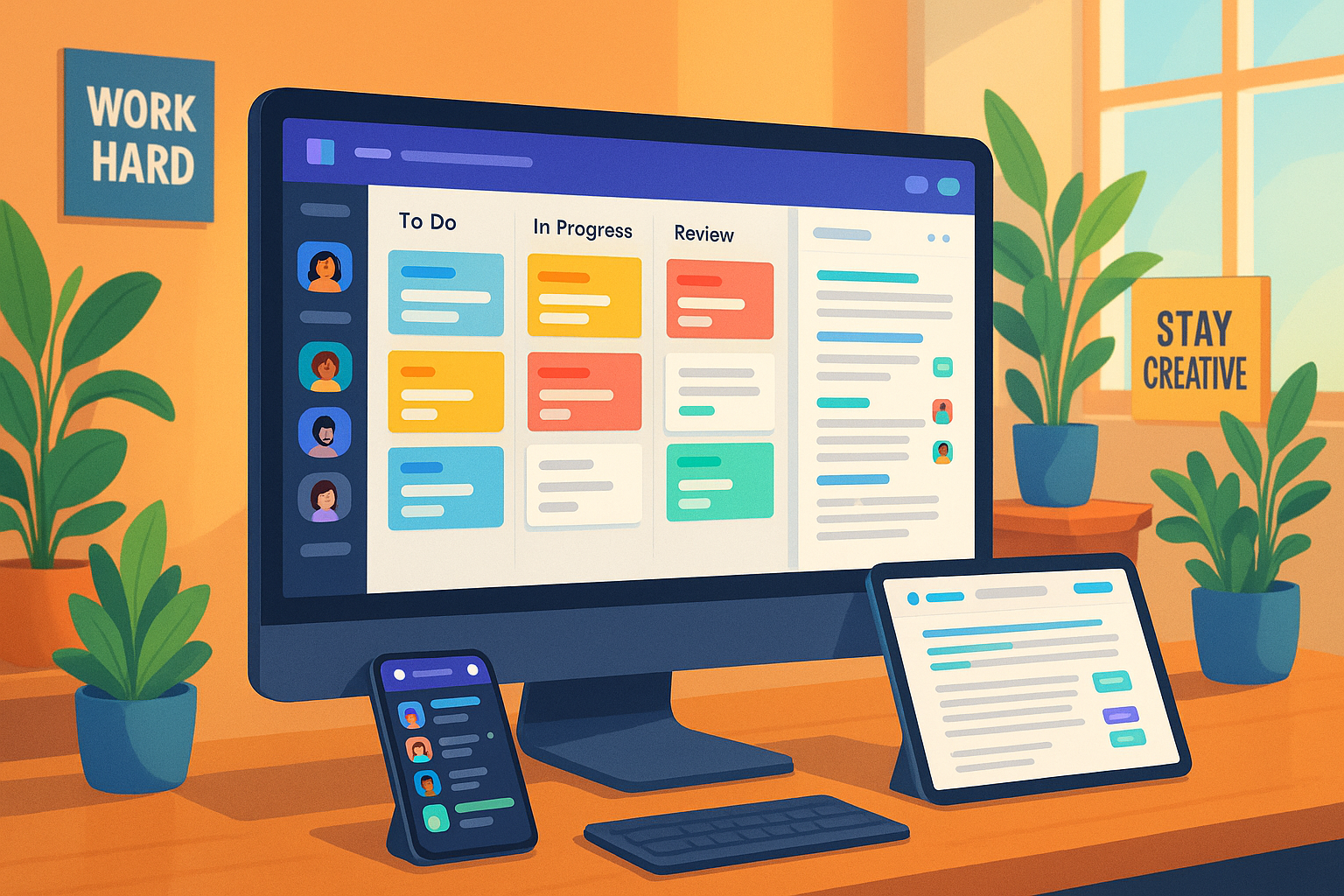Goals such as “find out about marketing automation tools,” “quit eating week-old leftovers,” and “finally figure out how the internet works” – one of which will undoubtedly fall by the wayside (no offense, radio is hard enough to understand).
Now might also be an excellent time to set reasonable business goals – specifically, customer success goals.

A survey conducted by SuperOffice found that 45.9% of businesses wanted to prioritize customer experience in the next five years. That makes a lot of sense when considering that a third of people will abandon a brand after a single bad experience. A focus on customers for 2023 is, therefore, a must.
Make sure your goals tick these boxes.

Smart and actionable goals should tick the following boxes for maximum success:
- Your goals should align with your values: what are your brand values? Do you have a list of shared values at your organization? Do your goals clash or align with these values? If one of your goals, for example, is to conduct customer service training for improved customer support, think about what that would mean in terms of impact on your time and work priorities.
- Your goals should have clear steps: goals are great, but they can become more of a burden than a motivating factor without clear steps to achieve them. Any goals you set should also have a clear path to success.
- Your goals should align with your overall business plan: are these goals emerging from observations of needs from past experiences? Are they a logical progression from last year’s goals and results? They should make sense in terms of what you’ve been doing and where you hope to go as an organization. It’s also worth considering the average conversion rate by industry while deciding on goals around customer conversions.
- Your goals should make you feel motivated: last but certainly not least, your goals should be motivating. They should feel like an exciting, collective aim. Goals that are too difficult or far-fetched are demotivating. If you’re pretty sure that you’ll fall short, it’s hard to motivate yourself to try, so they should be achievable. Including a new approach or tactic can make the goal more enjoyable.
Make sure your goals are SMART.

When we say S, you say SPECIFIC; when we say M, you say MEASURABLE. A, ACHIEVABLE, R, RELEVANT… T, TIMELY!
By keeping your goals SMART, you’re creating a clear pathway for completing those goals. Let’s break down what we mean by each characteristic.
Specific – by making your goals clear, such as “implement the best free CRM tool for my business by the end of the first quarter,” you help yourself visualize what it would mean to achieve them. Lofty goals are fine for life, but when it comes to your customers, having specific goals will help you to know if you’re getting there or not and what the destination is.
Measurable – by giving your goal a number, a quantifiable aspect, you can then clearly see if you’re reaching it in the universal language of numbers and statistics. Measurable goals are more accessible to relay to your colleagues and shareholders than abstract goals and include yearly and quarterly reviews.
Achievable – this goes back to motivation. If your goal is specific and measurable but almost impossible to achieve… well, then it just becomes a fun (or not so fun) thought experiment. We’re not philosophers and physicists involved in elaborate musings, so our goals should be achievable in the next year or two.
Relevant – everyone loves cheese toasties, and did you know that Uranus is the Greek word for “sky”? What are we trying to get at here… oh yes, relevance! Um, what were we saying again? Something about things being relevant and… cheese.
Timely – your customer goals should be achievable within a specific timeframe of your choosing. So if you want to accelerate your sales pipeline, decide how much and by when. Whether that’s a year or split up into quarterly goals is up to you. Just make sure you have a roadmap of milestones you hope to achieve by different points in the year.
How to choose your goals
.png?width=500&height=339&name=Screen-Shot-2022-01-19-at-4_46_17-PM%20(1).png)
So now that we know the essential characteristics your goals should have, it’s time to look at the process of setting your goals.
Come together as a team.
The best ideas often come from brainstorming with enthusiastic and intelligent people. What’s the point in going to great lengths to hire the best and the brightest, only to keep them hidden away in the corner? Bouncing ideas off each other is a beautiful and exciting process.
Include employees from other departments
It’s likely that members from other departments across your company, whether you work in a large or tiny organization, will have some incredible new suggestions to consider, like methods for building customer relationships through content. Maybe Customer Service and Marketing have a ton of experience and knowledge in doing things. Still, someone from Accounting could surprise you with some beneficial analysis methods or progress measurement skills.
Keep track of progress with regular meetings.
Having regular catch-ups with your team can help you monitor your progress and see whether any goals or techniques for achieving those goals need to be adjusted. You want to find the sweet spot where you leave enough time between meetings to have something substantial to discuss, but not so long that the goals and vision fall by the wayside.
Don’t be afraid to think outside the box.
It can be daunting if you work in a place with an entrenched hierarchy and office politics to suggest anything that goes outside of the status quo. As an employer, part of your job is to make sure your employees can, and comfortable with, suggesting new ideas and asking questions. So many people keep their heads down and try to get by, but it’s vital that people can ask questions like “what is HD calling?” and “how can we best use it?”
As an employee, having the courage to make suggestions can have surprising rewards. You might be met with more enthusiasm and positivity than you anticipated, and you might end up finding work more fulfilling and exciting.
Being creative with your customer goals and how to achieve them can lead to becoming trailblazers in new business and marketing techniques. You don’t have to go all out either – you can take tried and accurate methods and give them an interesting tweak.
Two examples of customer success goals for 2023
Now that we’ve covered the overall approach for setting goals let’s delve into a couple of ideas for plans you could put in place this year and how you can apply the SMART method to them.
Respond to customers more quickly
This is an excellent general goal to have and to get the most out of it; you can apply the SMART method in the following way:
Specific – how much faster do you want to respond to customers? And how will you make this happen? Will you use new software or implement a bring your device policy? Re-prioritize work? Automate your systems?
Measurable – How will you measure your response rate? Will you use a central database or software?
Achievable – what’s a likely response time average for your company?
Relevant – is it necessary or valuable to get back to your customers faster and, if so, why? Are you noticing more significant shrinkage in call center analytics across your organization? Is this leading to growing customer response times?
Timely – when do you want to have achieved this goal? If you decrease your average response time, will you check your progress at what intervals?
Improve customers’ access to you
Perhaps your response rates are reasonable, but customers struggle to get in touch with you. You could make it a goal to make it easier for customers to contact you in the first place, whether it’s for customer service or as prospective buyers. So here’s how we can do it SMART:
Specific – where are the weak points of contact now, and how can these be improved? Could you add more points of contact, like social media accounts? Are these messages filtering through to you? In other words, where’s the holdup, and what can you do to address it?
Measurable – How will you measure the success of this goal? Will you focus more on added points of contact, for example, or increased communication (or both)?
Achievable – how achievable is this goal? Do you have the staff to handle extra communication from customers?
Relevant – is this a problem that needs to be addressed, or are the contact points fine as they are?
Timely – when do you want to have this goal achieved? Is it a fixed point in time or an ongoing plan?
Customer goals will vary between companies.
The methods and approaches for deciding and fleshing out goals for the new year are primarily the same for retailers, wholesalers, and everybody else! Hopefully, this guide will have given you the confidence to brainstorm your own goals for 2023 and some valuable tips for making their vital goals.
About the Guest Blogger:
Grace Lau – Director of Growth Content, Dialpad
Grace is the Director of Growth Content at Dialpad, an AI-powered cloud communication platform with free live video chat for better and easier team collaboration. She has over ten years of experience in content writing and strategy. Currently, she is responsible for leading branded and editorial content strategies partnering with SEO and Ops teams to build and nurture content. She has written for Designlike.com and VMblog.com. Here is her LinkedIn.






